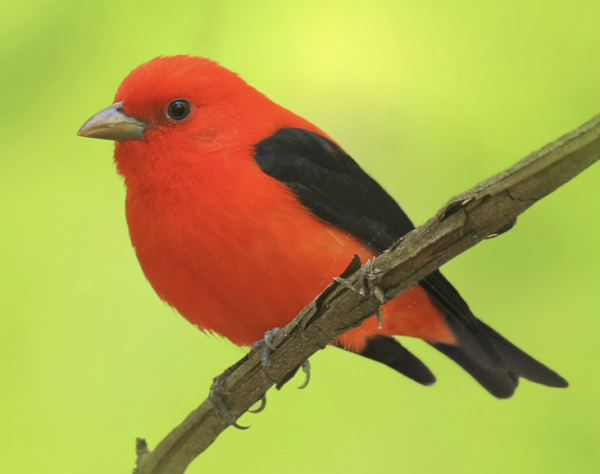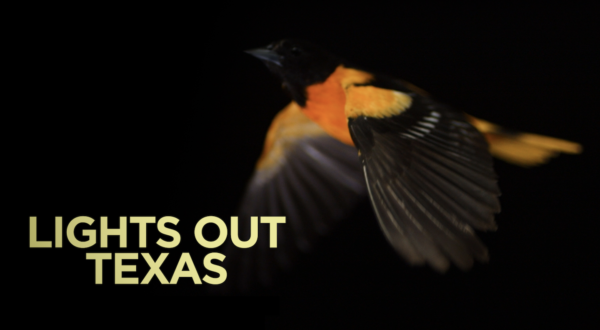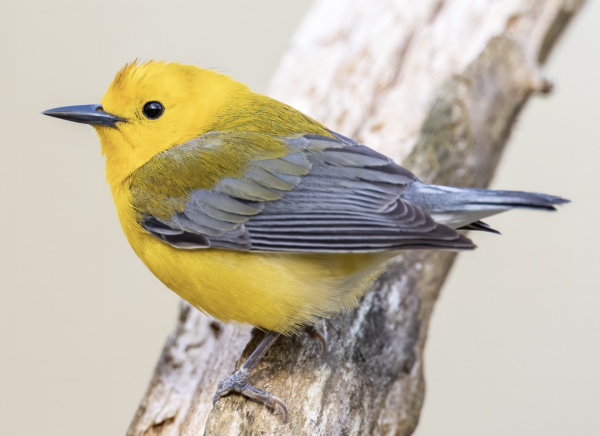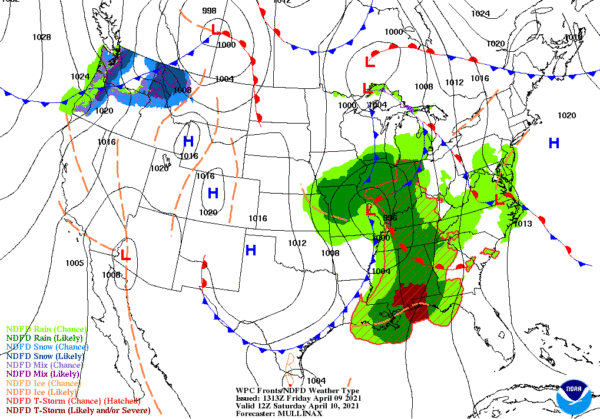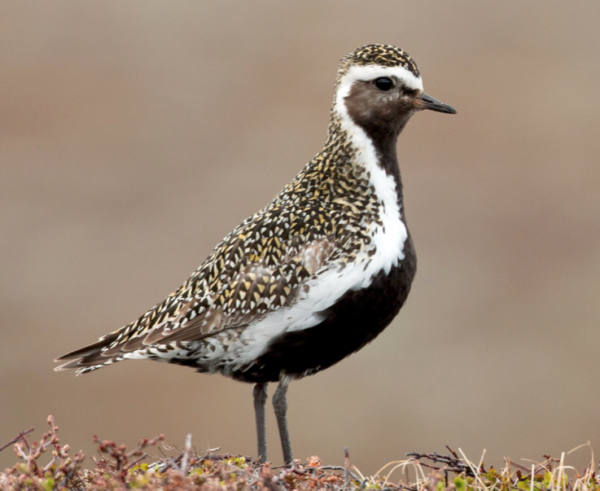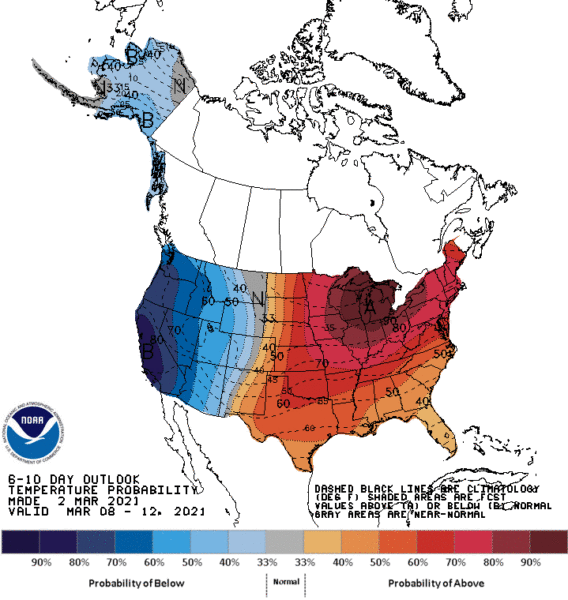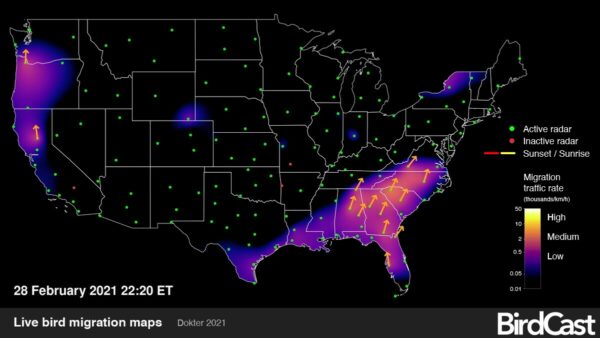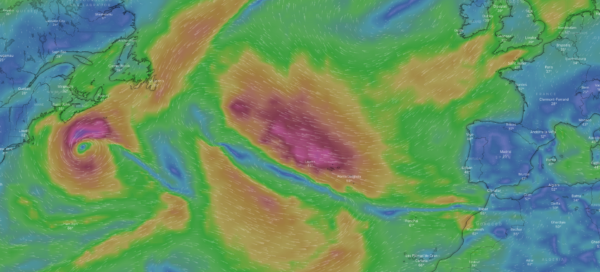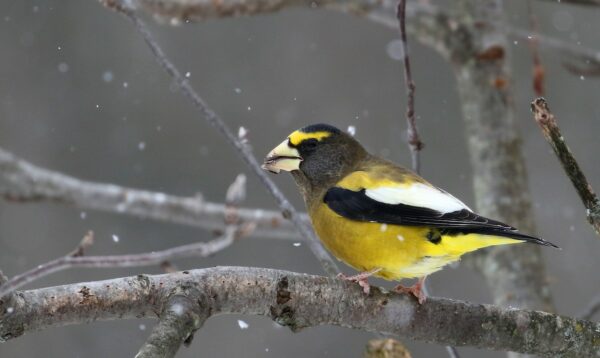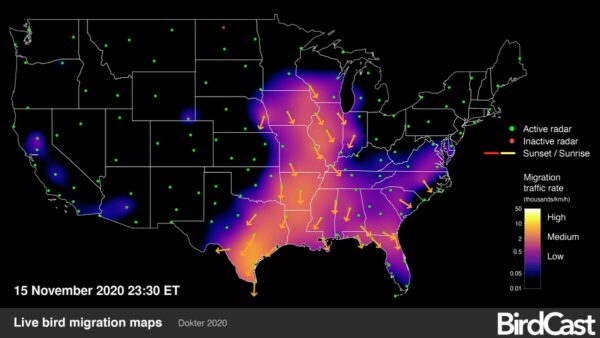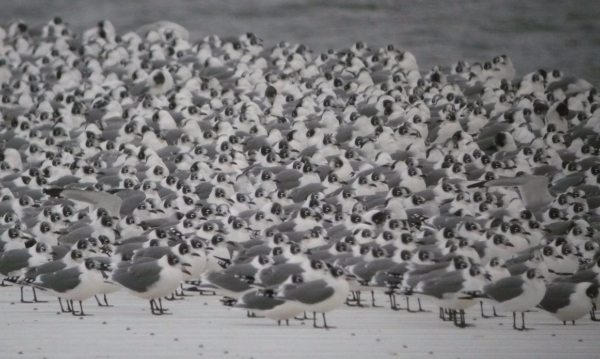Tanagers bring the most incredible splashes of color to spring migration across the continent. Check out the movements of three migratory species over the last month. Read more...
April's Super Pink Moon will be visible after sunset and reach peak illumination at 11:33 P.M. EDT on 26 April 2021. For those wishing to see birds migrating at night, if the sky is clear, point a telescope or strong pair of binoculars toward the moon, particularly if you are in a location where the BirdCast model predicts medium to high intensity migration. Read more...
An evolving frontal boundary will make for some interesting conditions along the Atlantic Seaboard to transport birds farther afield than they might typically travel in the coming 72 hours. Read more...
The spring window for peak bird migration in Texas has arrived, so it's time to get outside and experience the coming spectacle! Just doing one simple thing will help protect these migrating birds: turn off all non-essential lights between 11pm and 6am every night to go Lights Out and reduce collision risk! Read more...
Continuing frontal boundaries and associated unstable weather conditions in the Gulf of Mexico are going to make for some interesting migration patterns in the coming week. Read more...
The GloBAM research consortium published a letter in Science with a call for European national meteorological agencies to provide biological and meteorological data from its radars. Read more...
In the early morning hours of 9 April 2021, La Soufrière in St Vincent erupted and has continued to do so in dramatic and disastrous fashion in the days since the first explosion. The ash plume from these eruptions now spans a wide swath of the globe from the Caribbean to the western Mediterranean. Birds migrating through this plume may experience hazardous conditions, so observers in areas where concentrations of sulfur dioxide and other volcanic emissions are high should monitor birds' behaviors and physical conditions for potential signs of impacts. Read more...
The BirdCast team has unveiled a new feature on our maps! Forecast and live migration maps now indicate the total number of birds in flight above the contiguous United States. Read more...
On Saturday 10 April, a frontal boundary is forecast to move into the Gulf of Mexico region. Beginning midday Saturday, birds may begin concentrating in coastal habitats, particularly in the Upper Texas and southwestern Louisiana coasts; but events may be quite complex, because forecasts suggest that the front will stall. Read more...
Easterly winds are blowing in the North Atlantic, and they may bring some surprise visitors to northeastern North America. Read more...
With this season's migration underway, the BirdCast team would like to highlight the potential for an unusual migration event associated with predicted weather in the Gulf of Mexico region. The first significant cold front likely to interact over the Gulf of Mexico with incoming trans-Gulf migrants is predicted to pass through the region from 17-20 March. Let’s take a moment to review the current conditions while considering some of the (simplified) mechanics of this fascinating system. Read more...
Winter Storm Xylia is forecast to bring a blast of late winter to the Central Rockies and northern Great Plains this weekend and early next week. Birds will certainly respond to this storm, especially those of more open terrestrial habitats, by seeking more favorable locations free of snow if possible. Read more...
Over the coming weeks, our excitement about arriving migrants in the Gulf of Mexico region from Central and South America and the Caribbean will build to fever-pitch! Some of these migrants will arrive after significant over water flights, which we generally call trans-Gulf migration. We will speak of it often, to be sure! And though the peak of these movements is more than one month from now, even in mid March some inbound trans-Gulf bird migration is occurring over the western Gulf of Mexico. Read more...
Above average temperatures are coming to the eastern half of the US next week, and with these warming temperatures will come early season movements of birds. But for the western US, no such luck arrives. Keep a close eye on forecasts, ours included, to see what happens! Read more...
As the calendar page turns to March, the BirdCast team opens the spring 2021 migration forecasting season with the return of forecast and live migration maps! Birds are already on the move and have been for many weeks, but number have been increasing, particularly in the southeastern US last night. Read on to check on what species might be on the move in your part of the country. Read more...
Welcome to 2021! Team BirdCast has a number of projects underway for this year. And although we are still a good 4-6 weeks from the first significant movements of mid to late winter migrants moving in the US, keen observers should be aware of several patterns to watch now. Read more...
During Fall 2020 a “superflight of finches” occurred in the eastern US, featuring the biggest Evening Grosbeak migration in more than 20 years, redpolls undergoing their largest movement in perhaps a decade, and Pine Siskins irrupting in their best numbers since 2008. These ‘Finch Superflights’, which are defined as southern flights of all eight eastern irruptive finches, are rare, and this year, conditions have aligned and all species have moved in numbers, including the rarest of irruptives, the Pine Grosbeak. Read more...
With dawn’s arrival today Team BirdCast officially closed the books on another migration season of forecasting where, when, and how many birds will migrate over the contiguous US. Team BirdCast thanks all of you who spent time perusing our forecasts, pondering our interpretations, and (hopefully) ground-truthing our speculations! Read more...
Numerous storm-driven birds have likely appeared in peninsular Florida as the meandering Tropical Storm Eta churns in the Gulf of Mexico. With the forecast for the storm to make landfall and move quickly off into the Atlantic Ocean in the coming 24 hours, safe and careful observers may find a range of Gulf of Mexico seabirds and some displaced waterbirds. Read more...
Franklin's Gulls may be on the move far to the east of their normal autumn range in the coming 24-72 hours, as an intense storm system continues to move across the country toward the Atlantic Ocean and entrains and displaces individuals and flocks of this long-distance migrant. Observers in northeastern North America should be on the lookout, especially along coastlines, lakeshores, and rivers, from Wednesday through Friday. Read more...

